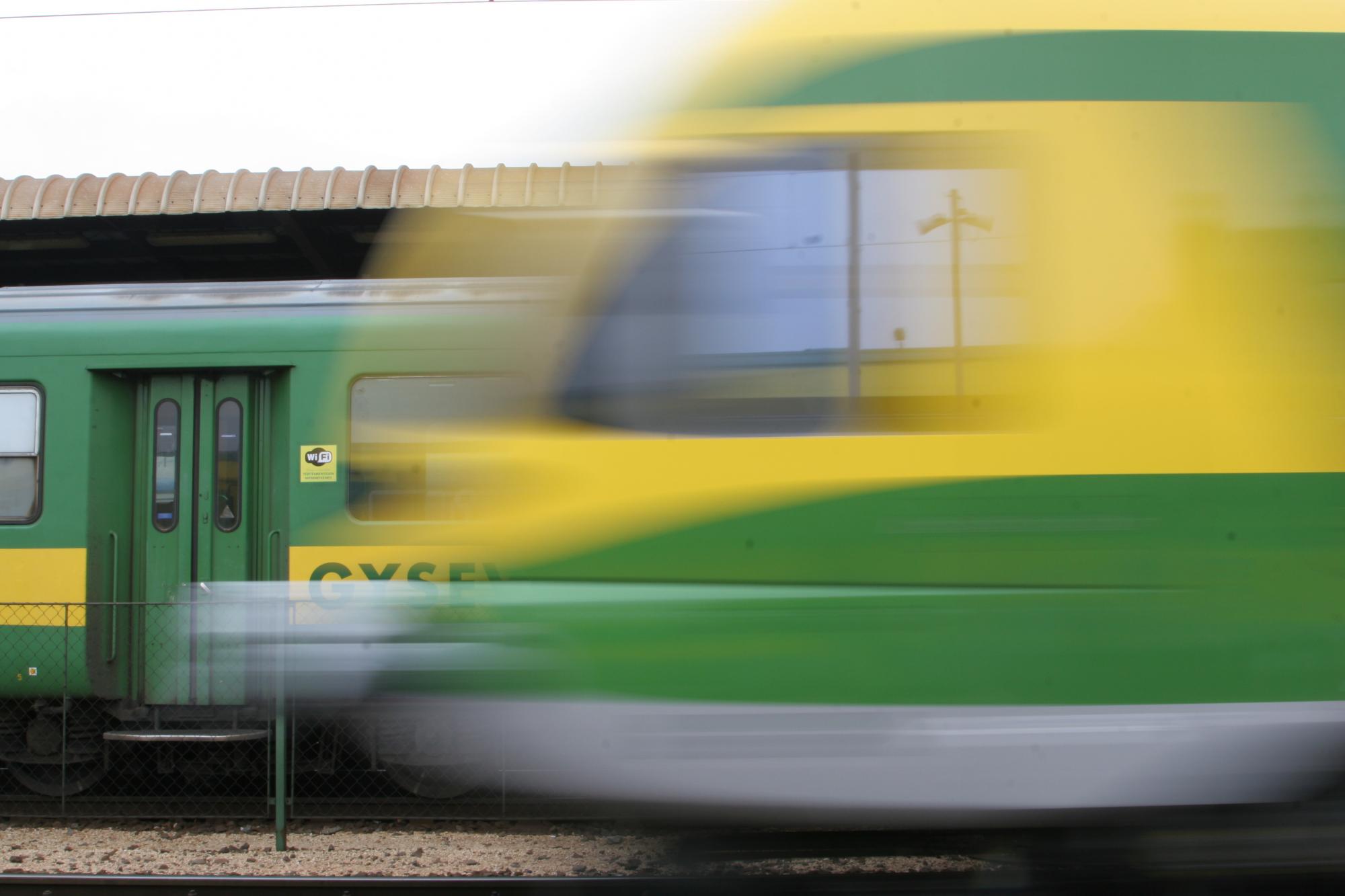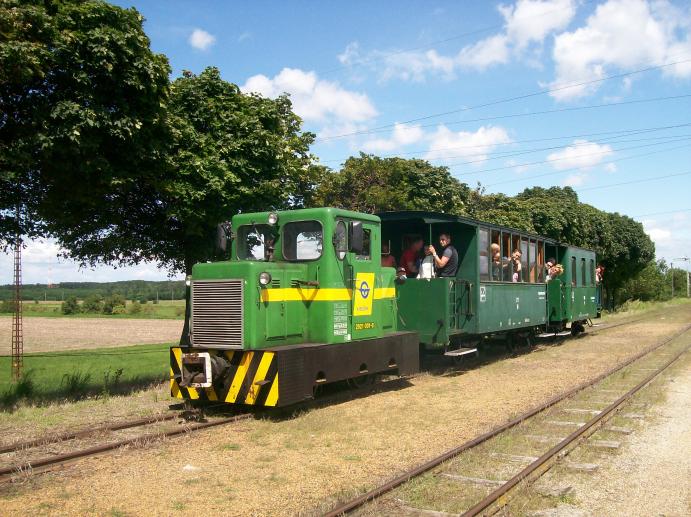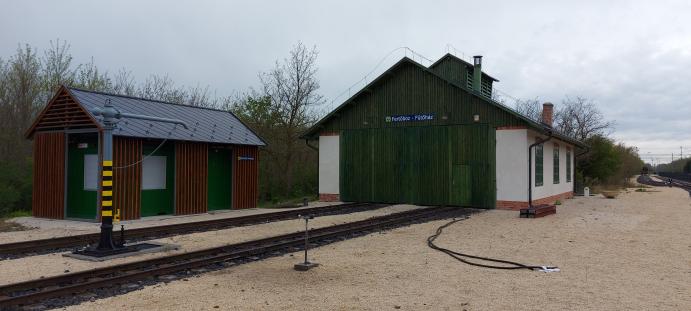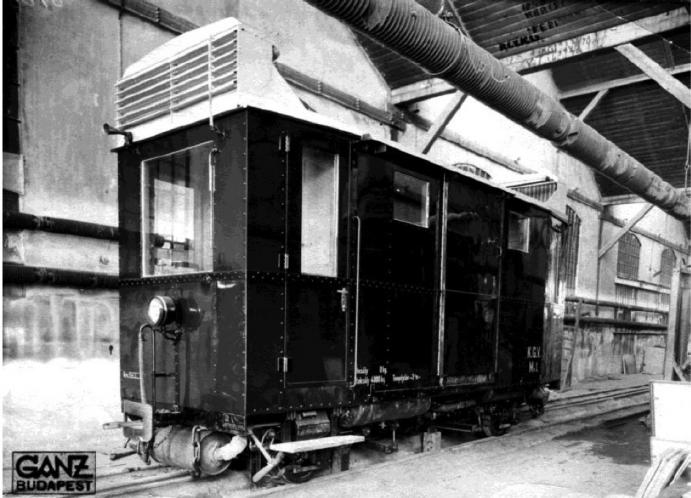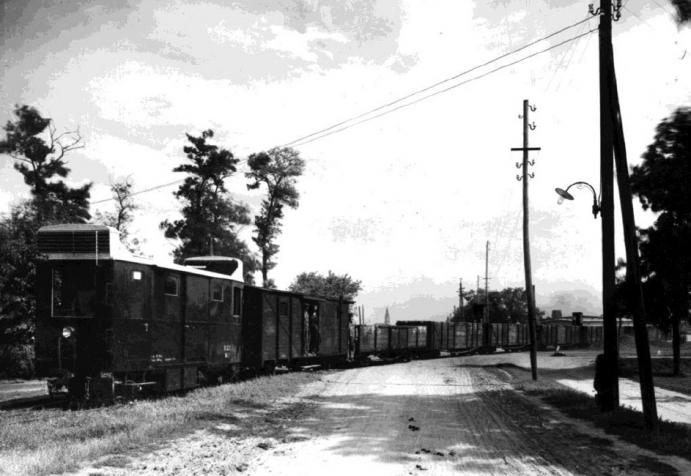The Széchenyi Museum Railway was built between Nagycenk and Fertőboz in 1972. The narrow-gauge railway has a track width of 760 mm and is 3600 m long.
In the autumn of 1969, GYSEV came up with the idea that together with the rapid wind-up of the domestic narrow-gauge railways, the most typical equipment and devices should be preserved and, if possible, presented to the public during operation.
The idea came just at the right time, since restoration work on Széchenyi Castle in Nagycenk had started just then and there were plans to create a memorial museum, too. Since a transport connection was necessary between the main railway and the castle, it was only natural to build the planned museum railway in Nagycenk, starting from GYSEV’s Fertőboz station. The first area inspection took place in September 1969. Here, a decision was made to use the embankment of the railway line of the former Fertőboz-Nagycenk sugar factory and the bridge over the Ikva for the new museum railway. Today, this first section runs between Fertőboz and Barátság. Implementation of the plan began on the drawing board and then continued with the search for materials for the track and suitable vehicles. The track construction began in the summer of 1970.
In order to start railway operations, two steam locomotives were put into operation. The steamers had been used in the kieselguhr mine in Szurdokpüspöki until 1970, when the then Ministry of Construction and Urban Development offered them to the museum railway. The vehicles were in excellent condition; the locomotive No. 394 023 was originally built in 1923 for the Mezőhegyes sugar factory’s railway and arrived in Nagycenk after its funnel and steam dome had been rebuilt. The small locomotives weighed 10 tons and had a top speed of 25 km/h. Between their wheels, they were able to store 3 m3 of water in their water tank. This increased the grip of the vehicle, whose running was stable thanks to the low centre of gravity.
To start the passenger transport services, GYSEV procured scrapped passenger cars from an already closed narrow-gauge railway in Kisújszállás. This is how the first three passenger cars arrived, which had been restored by a workshop in Debrecen. In the autumn of the same year, more cars were taken over from MÁV State Railways. From the passenger cars scrapped in Békéscsaba, a conductor’s car and four passenger cars were selected for the fleet.
The track was built using 14 kg/m of used rail material from demolished commercial railways, with a mix of concrete and wooden sleepers. The axle pressure permitted on the line was 4 tons. The second section of the line, which connects to Széchenyi Castle, was completed in 1972. The engine shed in Fertőboz was built at the same time as the new line section, according to the standard plans of MÁV. The two-track building, in which four locomotives can be accommodated, was intended for the storage and maintenance of the locomotives.
In autumn 1972, the dismantling of the Balinka Mining Railway began. The railway used locomotives of class 490 for traction - the last vehicles of this type. Therefore, the decision to give to the Museum Railway “Andrew”, one of the best locomotives of this type, was of particular importance.
The Széchenyi Museum Railway of Nagycenk was built to order in 1970–72 by Győr-Sopron-Ebenfurti Railways Private Company Limited by Shares using mainly own funds and with extensive social support.
In autumn 1974, the first plan for an open-air museum with nine locomotives was finished and construction work began, in which even Soviet recruits took part for a short time. After a temporary stoppage, works continued in the spring of 1978. The open-air museum finally opened on 29th July 1978 (the 28th Railway Day). In July 1981, as a result of further expansion work, a horse-drawn railway was built at Kastély station. The first major track reconstruction of the museum railway took place in 1987-88, when the axle load was increased from four to twelve tons.
The locomotive No. 394 023 was taken over in 2006 from the narrow-gauge railway of Debrecen. The other locomotive, a steamer with No. 394 057, had been running on the Szilvásvárad narrow-gauge railway since 1996. In 2004, GYSEV received a C-50 diesel locomotive with the name “Kiscenk” from the Balatonfenyves Commercial Railway. On summer weekends, the trains hauled by Andrew, the steamer, and Kiscenk, the diesel engine, transport young and old on the 760 mm wide rails along 3,600 meters.
The Museum Railway today
If you visit the Museum Railway, you won’t encounter ordinary staff. The rail services are provided by children here. These enthusiastic youngsters mostly between 10 and 18 years of age have committed themselves to spending part of their free time at the museum railway under the supervision of adult railway employees after receiving the necessary training. An enjoyable work without a doubt, but it also requires a lot of attention and educates to a sense of duty. In 1972, the Transport Museum gave the Museum Railway as a present a silk flag embroidered with the words of Count Széchenyi István: “The present can only be built on the appreciation of the past.” This became the saying of the children's railroaders here, who committed themselves to bring the visitors nearer to the historic world of the museum railway and to teach them to appreciate it just as much as they do.
Refurbishment in 2018-19 from state funds
In 2018, a comprehensive renovation of the museum railway began with the aim of modernizing the vehicles and procuring new playground equipment. Within the program, the entire line network including the Ikva bridge was renovated. New cross sleepers were installed in the straight sections of the line and new sleepers were placed in the arches. In addition, the entire substructure was replaced in certain parts, the embankment of the bridge was reinforced and the bridgehead cleaned.
A new thematic play and fitness park was set up at Kastély station and the platform in Fertőboz was renewed to accommodate the needs of passengers arriving on the main line. All vehicles of the museum railway (locomotives and also passenger cars) have been refurbished, and at Kastély station, the passenger coaches are protected from the cold of winter with a tent put up on the track.
In the course of the renovation, the entire substructure and roof construction of the engine shed in Fertőboz was refurbished and the building was expanded to include a gallery. The water crane in front of the building, which supplies the steamer Andrew with water, as well as the rest room for the train drivers have also been renewed. A front loader was also installed in the station area to make it easier for narrow-gauge rail vehicles to be loaded onto main railroad cars.
The history of the Dmot railcar
In the course of the reconstructions from 2018-19, the Dmot railcar - a rare treasure that had long been gathering dust in the engine shed in Fertőboz - was also renewed.
The history of this vehicle type began with the Kecskemét Commercial Railway, which needed a new vehicle and therefore ordered two double-axle luggage railcars in 1935. The railway specified important parameters: the vehicle had to be able to haul a 55-ton train along 50 kilometres (Kecskemét-Kiskunmajsa) at a speed of 50 km/h resp. a 110-ton train at a speed of up to 35 km/h. It had to cover this distance in just 130 minutes. The vehicle had a VI JaR 135-185 diesel engine (it was suspended between the two driver’s cabs in the luggage compartment, on the chassis) and operated the two axles via a four-speed gearbox. The railcars (with the operation numbers Mn1 and Mn2) constructed with a dark green riveted steel frame were completed in August 1935. After production, they received a manufacturer’s badge with the inscription GANZ.
The official inspection of the first vehicle took place on 14th September 1935 between Kecskemét and Kiskunmajsa, that of the second vehicle a little later, on 5th October. The vehicles of the Kecskemét Commercial Railway have proven themselves in both passenger and freight transport: they could travel as many as 40 thousand kilometres a year. Due to their efficiency, the company decided to procure another vehicle.
The outline drawing of the Mn3 (later Dmot 953) was finished on 27th November 1936, but production didn't begin until 1940. The third railcar was 500mm longer resp. its wheelbase 200mm longer than in the case of the two previous vehicles, which increased also its mass to 10.8 tons. The first test runs were carried out at the end of 1940. After a successful load test, where it hauled a 92-ton train, the official test of the vehicle took place on 20th December 1940 between Kecskemét and Fehértó. Here the railcar reached a speed of 58 km/h. In the beginning, it operated with the number Mn3, then, in the 1950s it was given a new operation number twice: Dmot 295.713 and Dmot 953. The vehicle was scrapped in Kecskemét in 1971 and then transported to the Széchenyi Museum Railway of Nagycenk in an operational condition. Unfortunately, it could not be accommodated in the engine shed and therefore stood outdoors for decades. For posterity, this is the only surviving vehicle of this type. In recent years, during the refurbishment of the Széchenyi Museum Railway, the Dmot 953 was also renewed. (Author: Bíró Norbert museology specialist)
Transport Museum
Nagycenk’s unique Museum Railway could not have been built without the support of the Transport Museum. The vehicles running here as well as the locomotives and passenger cars exhibited in the open-air museum are the property of the Transport Museum just like the form signals and switches necessary to conduct the transport services.
Join us for an exciting and unforgettable time travel!
